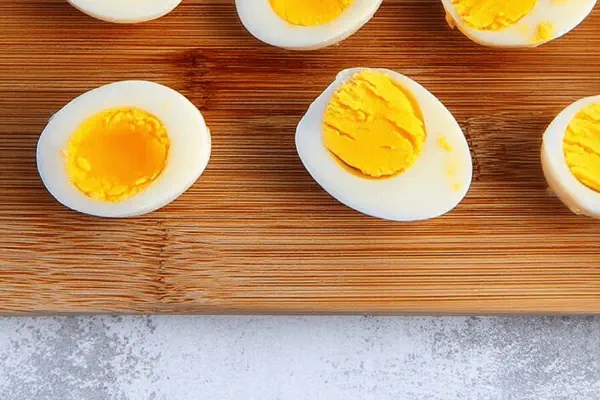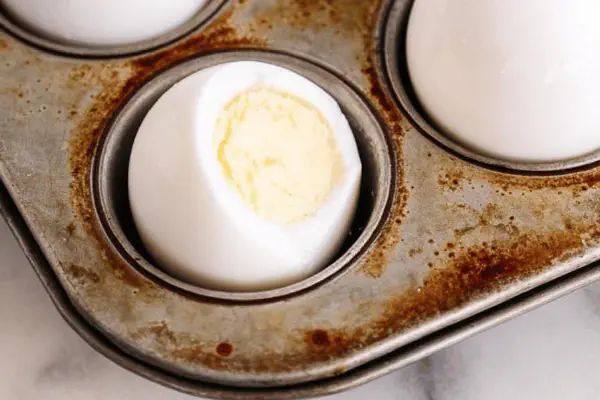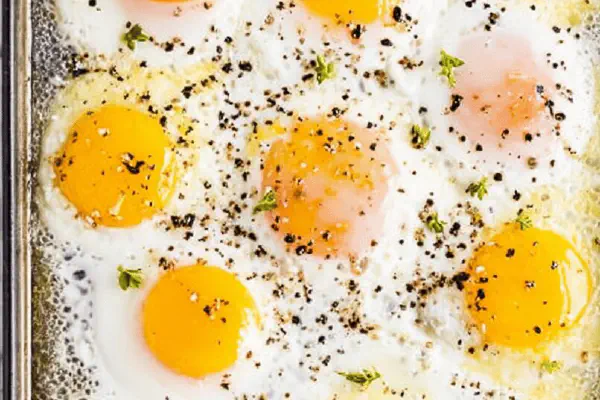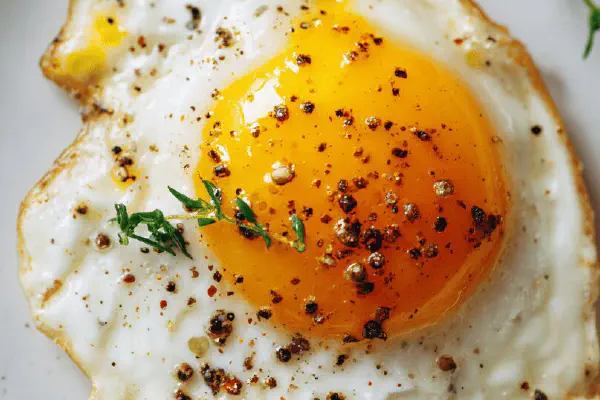Hard-Boiled Eggs Twist

By Emma
Certified Culinary Professional
Ingredients
- 12 large eggs
- 1 tsp baking soda or 2 tsp apple cider vinegar
- Cold water enough to cover eggs by 1/2 inch
- Ice and water for ice bath
- Salt as optional alternative
About the ingredients
Method
- Arrange eggs in bottom of a large heavy-bottomed pot. Enough space between eggs to allow water flow; no overcrowding. If tight, split into batches of 6.
- Sprinkle baking soda or apple cider vinegar into pot. Either affects pH and shell peeling differently; vinegar lowers pH, baking soda raises it.
- Fill pot with cold water until surface covers eggs by about half an inch. Cold water slow heating helps avoid cracking from temperature shock.
- Crank heat to high. Wait till water reaches full rolling boil. Not just simmer; bubbles furious and loud—rapid agitation means eggs are fully heating through.
- Once water roars, immediately remove pot from heat and cover tightly. Carrying heat through eggs by residual warmth produces better textures than constant boil.
- Time now depends on desired yolk texture. Soft jammy: 5-6 minutes cover; solid hard yolks: 10-13 minutes covered. Adjust based on altitude, egg size, pot type.
- Once timer’s up, scoop eggs quickly using metal slotted spoon or tongs. Drop into ice bath—best done immediately—to halt cooking fast, firm whites and stop yolk overcooking.
- Shake off excess water, crack shells gently on countertop, peel under cold running water to help shell slip off cleanly. Older eggs peel easier due to air pocket.
- Serve right away or store peeled in water in fridge for a day. Avoid long soaking or yolks dry out or develop green rings from overcooking.
- Note: If shells crack early, add a bit of salt to water next batch or reduce heat ramp to prevent pressure inside shells exploding.
Cooking tips
Chef's notes
- 💡 Start eggs cold; helps avoid cracks from heat shock. Watch for loud, chaotic bubbles—that’s your cue to pull off heat fast. Residual warmth finishes cooking. Baking soda shifts pH alkaline, helps shell pop off but can alter yolk texture if overused. Vinegar lowers pH, softens shell differently. Salt works as last resort; less effect but backups matter in kitchens. Overcrowding makes cracks guaranteed. Work in batches if pot tight. Ice bath mandatory; stops carryover heat; whites firm up without rubbery feel. Older eggs peel easier thanks to air pocket, fresher cook cleaner yolks but tougher peel.
- 💡 Removing eggs right as water roars matters. Not simmer, not rolling soft boil—full fury bubbles tell you heat is maxed. Pull pot, cover immediately. That trapped steam finishes whites gently; keeps yolks creamy rather than chalky dry. Timings: soft jammy 5-6 covered minutes, firm 10-13. Loosen peeling by cracking gently on countertop, peel under running water; stream helps shell slip, avoids pitted whites. Shells cracking prematurely? Salt splash or lower heat ramp next batch. Listen, look, touch yolks through shell for jiggle or firmness; clocks lie, eyes don’t.
- 💡 Apple cider vinegar or baking soda can be swapped depending on goals. Vinegar ensures shell softening but doesn’t lift membranes as baking soda does; alkaline boost lifts membrane, eases peel but risks whites that wobble if overdone. Salt least effective but sometimes only option. Cold water start and ice bath end—temperature control is key; prevents cracking and stops cooking abruptly to save texture. Don’t crowd pot; eggs bump, crack. Use heavy-bottomed pot for even heat. Slotted spoon or tongs prevent dropping & cracking. Peeling older eggs easier. Water hardness plays role; soft water may peel different than hard. Little things add up.
- 💡 Timing varies with altitude, size, pot material. Rely on sensory cues: bubbling noise, yolk jiggle, shell snap. Longer cover times past 12 mins dry yolks, greenish sulfur ring start—avoid. Soft jammy needs shorter rest off heat. Kitchen noises shift; boiling water rush, loud bubbles means eggs inside aggressively heated. Chill fast in ice bath—seconds matter. Peel under cold running water or shell clogs whites with pitting marks. If shells cling, slight extra baking soda might help but watch taste changes. Salt is backup. Batch cook for space. Carryover heat cooking gentler than constant boil, saves whites from toughness. Experiment carefully with timing.
- 💡 Egg size matters big. Jumbo eggs add minute or two. Freshness matters too; older eggs easier peel but potential yolk color difference. Baking soda too much equals chalky yolks; too little, sticky shells. Vinegar shifts pH lower, soft shells but membranes stay tighter. Salt replaces both but weaker. Start with cold water; thermal shock breaks shells. Roaring boil key signal; crack after cooling, peel under stream. Immediate ice bath stops cooking fast, firms whites but avoids rubberiness. Use metal slotted spoon or tongs to scoop, avoid shell damage. Storage peeled in water fridge day max; no soak longer or yolks dry or turn green. Timing and texture tight dance.
Common questions
Why use baking soda or vinegar?
Baking soda changes water alkaline lifts membrane from shell easing peel. Vinegar drops pH softens shell itself but membranes stick tighter. Salt milder option, less peel help but backup if out. Overdo soda, yolks chalky. Underdo, tough peel sticks. Try small amounts. Depends on egg age too.
How to tell doneness without clock?
Listen for roaring boil loud, chaotic bubbles. Pull pot immediately, cover to finish whites with residual warmth. Yolk jiggle through shell clues jammy, firm if no movement. Touch sensation works too. Lots of factors; size, altitude, pot. Eyes and ears better than exact minutes.
What causes cracked shells?
Sudden temperature changes cause cracks. Start eggs cold under water avoids shocks. Overcrowded pots. Eggs bump, crack. Use heavy pots, space out eggs. If cracks happen, add salt next batch or ramp heat slower. Cracked shells spoil timing and peel.
How to store peeled eggs?
Keep peeled eggs submerged in water in fridge up to 24 hours. Change water daily if possible. Avoid soaking too long, egg whites dry, yolks get greenish ring. Can store unpeeled longer. Use airtight containers for freshness. Real kitchens improvise here.



